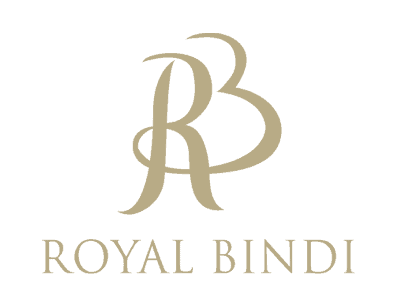Planning a Gujarati wedding in the UK is a beautiful intermingling of tradition and modern flair. But if you’ve ever found yourself wondering which customs to include (and how actually to fit them into your British wedding venue or schedule), you are in the right place.
With years of experience capturing beautiful Gujarati weddings across the UK in popular hotspots like London, Southall, Wembley and Leicester, Royal Bindi offers you not only a one-stop shop for capturing everlasting memories of your Gujarati Wedding but also valuable insight into the traditions and rituals that make these celebrations so special.
In this post, we’ll walk you through the most important Gujarati wedding rituals, how they’re adapted in the UK, and how a professional studio like Royal Bindi can help capture every unforgettable moment with elegance and ease.
Gujarati Wedding Traditions in the UK: Pre-Wedding
Like many Indian wedding traditions and rituals, Gujarati ceremonies begin well before the wedding ceremony day itself. You’ll witness symbolic rituals, family bonding, and a whole lot of colour and excitement in the pre-wedding phase.
These events set the tone for the wedding and give your loved ones a chance to come together, bless the couple, and celebrate in true Gujarati style.
Gujarati weddings in the UK are vibrant, large-scale affairs, especially in cultural hubs like Leicester, Southall, and Wembley, where communities come together to celebrate tradition with flair. If you’re planning yours, our Gujarati Wedding Photography in London ensures every colourful moment is captured in cinematic detail.
Let’s take a closer look at some of the most cherished customs and how they’re brought to life right here in the UK.
Chandlo Matli or Chandla Vidhi
In the beautiful Chandlo Matli ritual, five married women delicately apply clay containers called matli and red vermilion, or kumkum, to the forehead, known as chandlo. This heartfelt Gujarati wedding ceremony marks the inception of the marital journey, symbolising the deep bond between the bride and groom.
It’s a moment of significance where the bride’s parents adorn the groom with chandlo and present a matli filled with sweets to the other family, often signifying the setting of the wedding date. It’s a touching tradition that embodies the essence of unity and love as families come together to celebrate the beginning of a new chapter in the couple’s life.
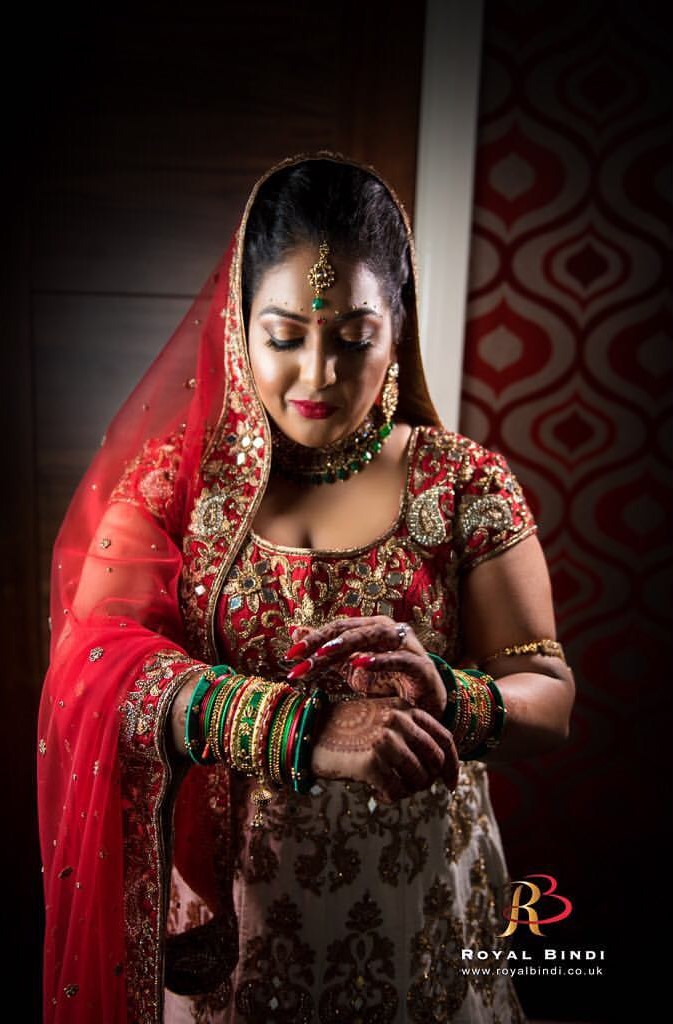
Gol Dhana, Sagai, and Engagement
The essence of Gujarati wedding traditions and rituals shines through in the heart-warming Gol Dhana and engagement ceremony. Imagine a moment where the sweetness of jaggery (gol) and the aromatic coriander seeds (dhana) come together, symbolising the union of two souls. This ritual, whether celebrated grandly or intimately at home, is a beautiful occasion where elders shower blessings upon the couple as they embrace each other formally.
Chandlo Matli and Gol Dhana Vidhi, often intertwined on this special day, mark the beginning of a journey filled with love, respect, and togetherness.
Mehndi
Henna is intricately applied to the hands and feet of the bride and female family members during the Mehndi ceremony, blending tradition with artistry. Originally for decoration and relaxation, the henna designs, like doli and musical instruments, allow brides to personalise their henna with meaningful symbols, creating a joyful and creative atmosphere. It is usually held at the bride’s house.
Mehndi adds a fun and bonding element to the Gujarati wedding celebrations, whether held together or separately at the bride and groom’s homes.
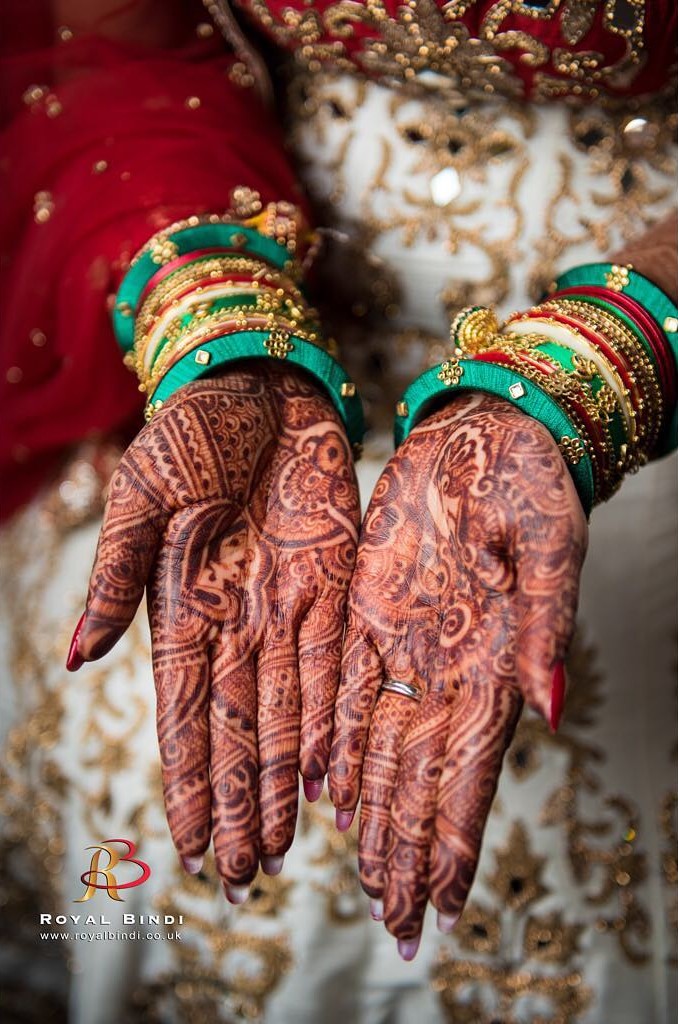
Fun fact:
It’s customary for the groom to locate his name, which is deftly concealed inside the mehndi pattern, and he is not supposed to view the bride’s mehndi before the wedding.
Garba, Sanji, and Sangeet Sandhya
These lively celebrations, central to Gujarati weddings, can be standalone or part of the Mehdi ceremony. Families typically combine them for a more festive atmosphere. Events like Sangeet Sandhya (music nights), skits, dance performances, and Garba-raas are common.
Held in various wedding venues, from banquet halls to temples, these celebrations feature traditional attire like “Chaniya choli” or “kurta” for vibrant images.
Matli Ganesh
The Ganesh Matli ceremony marks the beginning of pre-wedding rituals in a Gujarati wedding. Families from Gujarat’s north and west often perform this ritual. The bride, accompanied by her family members, visits the groom’s family with a lord Ganesha idol and a matlis filled with candy.
After the welcome and vermilion application by the bride’s brother, the couple conducts a Ganesh puja together. Subsequently, the bride’s family departs, and the groom’s family continues with the remaining rites.
Mandap Muhurat
Mandap Mahurat, also known as Mangal Mahurat, is a ritual where both the bride and groom seek blessings from Mother Earth before setting up the mandap. Traditionally, a decorative wooden stick, Manek Stambh, is inserted into the ground as part of this ceremony.
Nowadays, a Manek stambh is placed in a decorative pot filled with soil to symbolise this auspicious ritual.
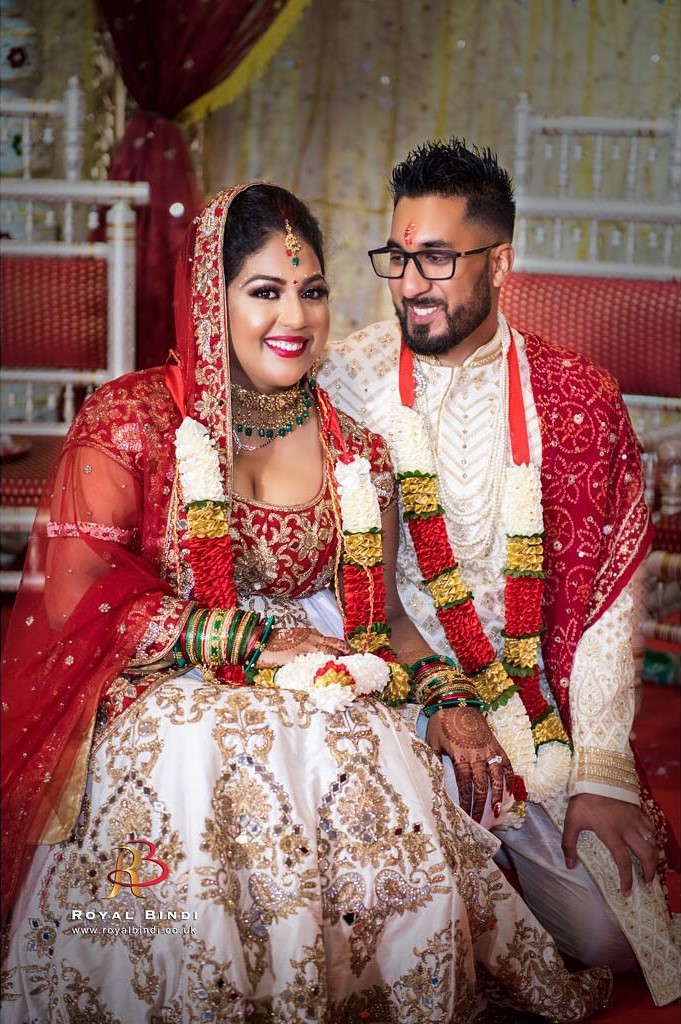
Grah Shanti
After the Mandap Mahurat, the family priest conducts the Griha Shanti ceremony to seek the blessings of all the solar system’s nine planets for both the bride’s and groom’s families. This ritual is essential in Gujarati Hindu weddings to ensure a harmonious and prosperous married life for the couple.
Mameru/Mosalu
The bride’s maternal uncle visits her during the Grah shanti puja before the wedding, bringing gifts like a Panetar saree, jewellery, candies, and dried fruits beautifully presented in trays.
Haldi/Pithi Ceremony
The day before the wedding, after the Grah Shanti ceremony, the Pithi ceremony is performed individually at the homes of the bride and groom. They sit on a low seat called the Bajoth, where a paste of turmeric, sandalwood, rosewater, and herbs is applied to their faces and hands.
Sandalwood, known for its anti-inflammatory and beautifying properties, is traditionally used alongside turmeric. The Pithi is customarily made by the bride or groom’s paternal uncle’s wife (Kaki).
Interested fact:
It’s said that the couple that applies haldi to an unmarried individual would end up being the next to get married.
Gujarati Wedding Traditions in the UK: Wedding Day
After days of joyful pre-wedding festivities, the main event arrives: the wedding day itself. Gujarati weddings involve vibrant rituals, heartfelt moments, and a strong sense of community, and when celebrated in the UK, they beautifully merge tradition with contemporary touches.
Each part of the day holds deep cultural meaning, from grand entrances to sacred vows.
Here’s a typical Gujarati holy matrimony reimagined for modern British settings:
Varghodo/ Baarat
In Gujarati wedding ceremonies, the Varghodo is a pre-groom’s arrival ritual where the groom’s sister circles his head with a bowl of money to ward off evil spirits. This tradition symbolises the bond between the siblings, reminding the groom not to forget his sister. The family then proceeds to the wedding location in a joyous procession.

Arrival of the groom/Jaan Agman
The Jaan rite is conducted to greet the groom and his family when they arrive at the wedding reception on a beautifully adorned steed. In particular, a Jaan or Agman ceremony is held when the groom arrives with his family with sweets and Aarti.
Ponkvu, Pokhna, and Pokhnu
The custom symbolises the groom’s arrival at the bridal mandap. The bride’s Mother blesses him, feeds him sweets, and performs Aarti. During the playful Pokhna ritual, she playfully tries to pull the groom’s nose to remind him to be humble as he seeks her daughter’s hand in marriage, creating a lighthearted moment.
Jaimala
The custom symbolises the groom’s arrival at the bridal mandap. The bride’s mother performs Aarti, blesses him and feeds him sweets. During the playful Pokhna ritual, she playfully tries to pull the groom’s nose to remind him to be humble as he seeks her daughter’s hand in marriage, creating a lighthearted moment.
Madhuparka
During the Madhuparka ceremony at a Gujarati wedding, the bride’s mother leads the groom to the mandap. Here, he receives a foot bath with milk and water, followed by being offered Panchamrut—a mixture of milk, yoghurt, sugar, ghee, and honey. Meanwhile, the bride’s sisters scheme and execute the Joota Chhupai (Shoe concealment) ceremony.
Antarpat
After the bride enters the wedding mandap, a fabric called an antarpat is placed between her and the groom. This custom is followed during Gujarati weddings to keep the couple’s faces hidden from one another.
Kanyadan
Gujarati marriages, like other Hindu weddings, are based on the Kanyadan custom of the bride’s father giving his daughter to the groom. The bride’s father washes the groom’s feet first, then asks him to look after his daughter, giving the groom responsibility for her.
Quick Melap
The wedding priest ties the bride’s Palla saree and the groom’s shawl to form the holy knot, which symbolises the uniting of two souls. He repeats sacred mantras while putting their hands together. The pair is blessed by every member of the family and relatives, who shower them with rose petals and rice grains.
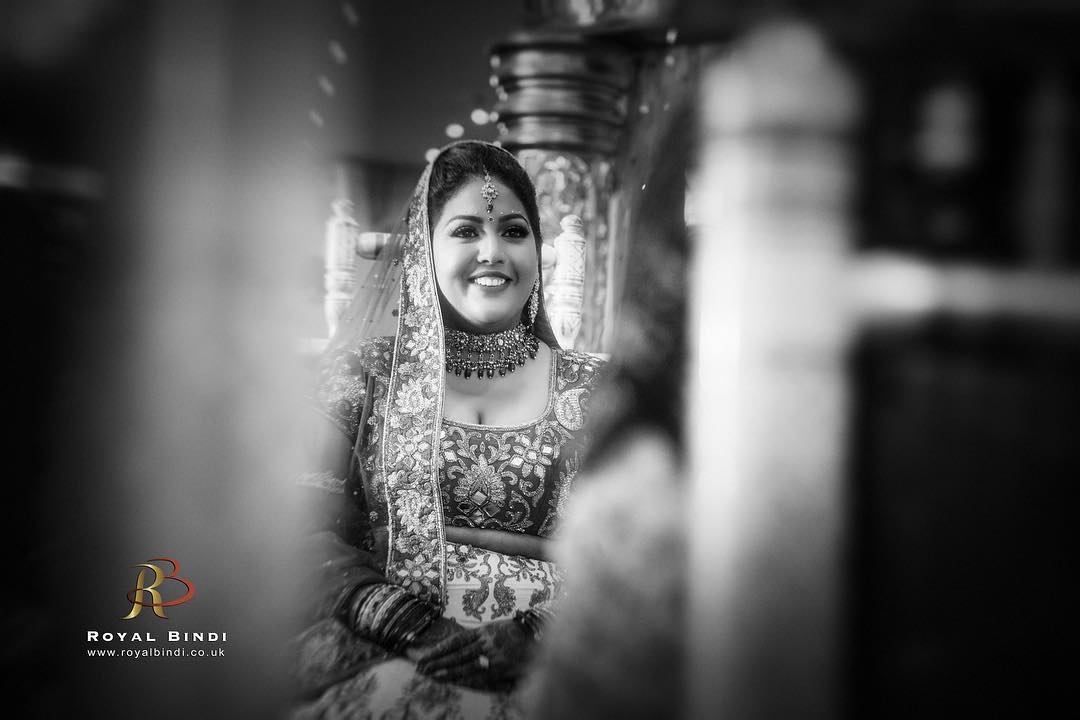
Angi Fera / Mangal Phera
During Mangal Pheras, the couple circles the sacred fire four times, chanting mantras that symbolise vows to remain together for life. Each round represents key aspects of a happy marriage: “Dharma,” “Artha,” “Kama,” and “Moksha.” After each round, the bride’s brother gives them puffed rice to offer to the holy fire.
The Saptapadi
The big fat Gujarati wedding culminates with the Saptapadi, which means Seven Steps. According to the Vedic tradition, the newlyweds are encouraged to complete the seven ceremonial steps around the ‘Agni’ (sacred fire) in their wedding ceremony, taking seven vows.
In the UK, however, some couples choose to have shorter or more modernised versions of the traditional Gujarati wedding ceremony, but many still observe the full tradition. Most often, they blend Sanskrit verses with English translations so guests of all backgrounds can understand the meaning of each vow.
Wedding photographers such as Royal Bindi know how to capture this powerful moment with cultural reverence and cinematic style.
Here is what each of the seven vows traditionally means:
- First Step: Nourishment: The couple prays to have a life filled with food and sustenance. It symbolises their commitment to taking care of each other and ensuring their family never goes hungry.
- Second Step: Strength: This is the step of physical and emotional strength. The couple promises to be supportive of each other through life’s challenges and to get stronger together.
- Third Step: Prosperity: During this step, the couple prays to be prosperous and successful in life. They promise to work together to attain financial and spiritual goals.
- Fourth Step: Family and happiness: They promise to maintain harmony and respect in their family, stand by each other, and raise children with shared values for a peaceful marital life.
- Fifth Step: Health and well-being: The couple asks for blessings for good health and life and promises to look after each other when they are sick and healthy.
- Sixth Step: Lifelong friendship: This step highlights companionship. The couple promises to always be best friends, confidants and equals in the relationship.
- Seventh Step: Unity and loyalty: The final vow is to promise eternal love, loyalty and unity. Once the marriage is sealed, it commits to walking life’s journey together forever.
Kansar, Mangal Sutra, and Sindoor
In a Gujarati wedding, the final stages involve the groom applying vermillion (Sindoor) to the bride’s hair mid-parting, symbolising her status as a married woman. He then places the Mangal Sutra around her neck. Following the ceremony, the couple participates in the Kansar ritual, feeding each other sweets. Finally, they seek blessings by touching their elders’ feet as the wedding concludes.
Also read: Top 10 Poses for a Couple Photoshoot for Beautiful Memories in the UK.
Gujarati Wedding Traditions in the UK: Post-Wedding
Even after the wedding ceremony, the celebrations don’t end for many Gujarati families. The post-wedding traditions are equally emotional and meaningful.
These are traditions of the bride’s transition into the new home and the beginning of the couple’s life together. The sentiments behind each custom, though, are very much embedded in Gujarati culture, despite the fact that the setting is in the UK.
Let’s explore some of the most cherished post-wedding ceremony rituals and how they’re thoughtfully adapted for British-based celebrations:
The Saubhagyavati Bhava
The newlyweds are invited to a blessing by seven married women. The women say “Saubhagyavati Bhava” (which translates to “may your marital life flourish with eternal glory”) to the bride as they ask for their blessings.
Pakadyo Chhedo
In a hilarious Gujarati wedding custom, the groom catches his mother-in-law’s saree pallu and requests further presents! After that, everyone stuffs her saree pallu with presents and money, which are subsequently given to the groom’s family.
Vidai
Following the celebration, the bride has an emotional Vidaai Ceremony in which the bride bids farewell to her parents’ house. She tosses rice grains in the direction of the home she is leaving behind from the back of her head. It symbolises her repaying her family’s obligations.
Pravesh Griha
The bride’s mother-in-law extends a hearty greeting to her at the groom’s house. She greets the bride and does the couple’s Aarti. The bride, now a married woman, is then expected to push a pot full of grain straight up to the residence’s entrance. This is seen as an auspicious tradition in Gujarati weddings that would bring good fortune.
Aeki beki
Aeki Beki is a funny Gujarati wedding ritual game that the bride and the groom play together. Milk, vermilion, water, cash, and a gold ring are all placed into a large container. With only their right hands, the pair must locate the ring within the container. The family gives a token cash or a gift to the game’s winner.
What is the Significance of the Gujarati Wedding Outfits?
Gujarati traditional attire is more than just elegant. It’s deeply symbolic, representing tradition, family values, and the joy of union. The Panetar (a white and red saree gifted by maternal uncle) and Gharchola (a red saree with gold zari work from the groom’s family) are iconic for brides. These garments are beautiful, but more than that, they represent the joining of two families and the blessings that come with that during wedding celebrations.
Sherwani or Dhoti-Kurta is a type of dress that Grooms mostly wear in shades of cream, gold, or maroon, along with a Safa (turban). Embroidery, colour choice, and every other element are carefully chosen to honour heritage and reflect personal style.
In the UK, most couples marry in a mix of traditional silhouettes and modern tailoring or in fusion looks that are both cultural and contemporary. A classic red lehenga or a pastel-toned saree tells a story, and you need someone with an expert eye to capture the story.
Every Gujarati wedding ritual offers a unique opportunity for storytelling. Whether you’re hosting your Mehndi night at home or booking a hall in Southall or Leicester. That’s where Royal Bindi’s Gujarati Wedding Photography in London comes in, helping you preserve these moments with elegance and authenticity.
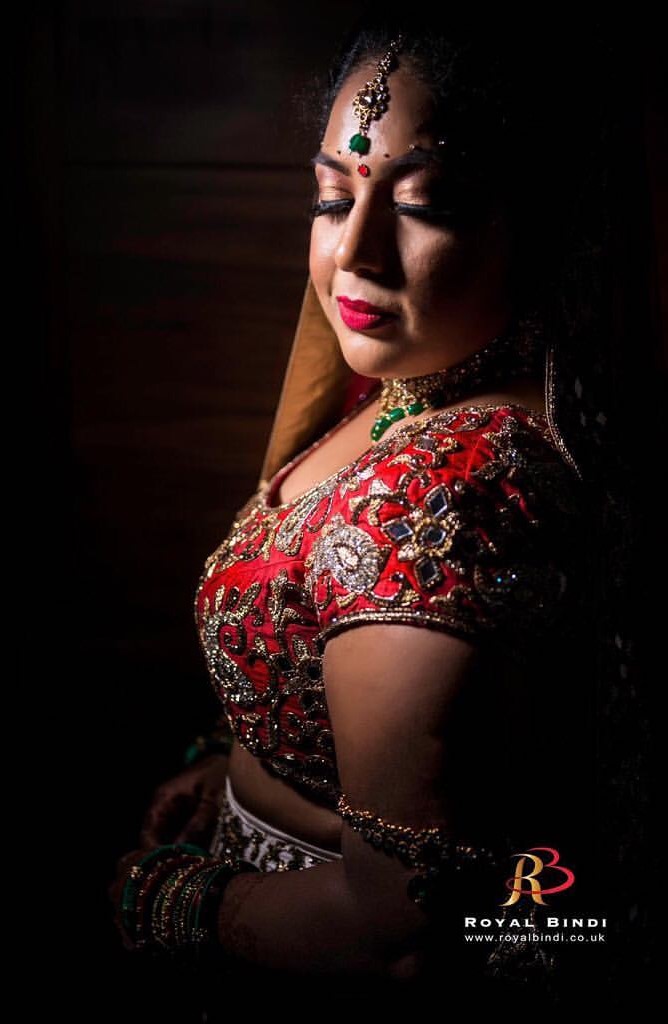
Expert Gujarati Wedding Photography Services to Capture Your Day!
Conclusion
Gujarati wedding traditions and rituals are filled with blessings, love, and laughter. They culminate in the couple’s journey through the sacred Mangal Pheras and the touching Vidai ceremony, symbolising the beginning of a new chapter in their lives.
Planning a Gujarati Wedding UK style means blending vibrant traditions with modern touches, creating a heartfelt and unforgettable celebration. Opting for experienced and professional photography and videography services is crucial to capture the essence of these vibrant celebrations.
Royal Bindi boasts a team of passionate photographers and videographers who understand the nuances of Gujarati wedding traditions. We specialise in capturing the emotions, traditions, and sheer joy of your special day, crafting a visual narrative you can cherish for years.
Contact Royal Bindi today to capture your special day!
Frequently Asked Questions
Here are the answers to some common questions about Indian weddings in the UK:
Who typically covers the costs of an Indian wedding in the UK?
Traditionally, the bride's family covers the Gujarati wedding cost, but both families often share costs equally in the UK.
What is the significance of the Garba and Dandiya in a Gujarati wedding?
They symbolise joy and community, honouring Goddess Durga through music, dance, and vibrant celebrations before the wedding day.
How is the role of the groom's family different in Gujarati wedding rituals?
The groom’s family leads key rituals like the Baraat and Mandap Muhurat, symbolising their welcoming of the bride.
What is the Pithi or Haldi ceremony in a Gujarati wedding?
It is a pre-wedding celebration ritual where wet turmeric paste is applied to bless, cleanse, and beautify the bride and groom before marriage.
What is the Joota Chhupai tradition in Gujarati weddings?
During Joota Chhupai, the bride’s family hides the groom’s shoes for fun and bargaining, adding humour and bonding to the celebration.
What is the importance of the Saptapadi ritual in a Gujarati wedding?
It’s the sacred seven-step vow taken around ‘Agni’ (holy fire), symbolising unity, partnership, and shared responsibilities in married life.
Can I get married in the UK during Navratri?
Yes, you can have your wedding date during the Navratri but venues book quickly during Navratri due to celebrations, so plan early if marrying during the festival.
What is appropriate attire for a Westerner attending an Indian wedding in the UK?
You should choose colourful, modest outfits like sarees, lehengas, or kurta sets. Avoid white and black unless styled respectfully.
Is it appropriate to wear black to a Gujarati wedding in the UK?
Traditionally avoided due to mourning associations, black can be acceptable if styled festively and respectfully.
How much can I give as a gift at an Indian wedding in the UK?
Monetary gifts are common, with £50–£150+ being typical, depending on your closeness to the couple and personal budget.
Are Hindu wedding ceremonies legally recognised in the UK?
No. You’ll still need a civil ceremony for legal recognition. The wedding ceremony is spiritual and culturally binding, not legal in the UK.
How do you prepare for a Gujarati wedding photoshoot?
Coordinate outfits, plan rituals’ timings, choose meaningful locations, and trust a professional like Royal Bindi for authentic, stunning coverage.
Enquire Here
Quick Links
Useful Links
